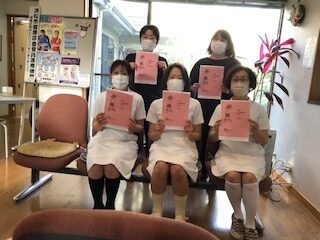Dr Hitoshi Maeshima, an ICDP trainer, shares the following experience:
In Japan, new coronavirus vaccination for children between the ages of 5 and 12 began in March 2022.
At our clinic, we decided to inoculate by appointment 40 people, twice a week. This means working on Wednesdays and Saturdays for 4 hours each time. We hired six new staff members to help with the corona vaccination of children. Our team has been learning how best to deal with children during vaccination.
I thought it was important for all involved to become acquainted with the essence of the ICDP programme, in order to deepen their understanding about interactions between adults and children, and for that purpose I conducted an ICDP session over a period of four hours.
During that time, we discussed what it means to see children as human beings, and how to treat them in line with the ICDP’s 8 guidelines for good interaction. I asked the staff members how they felt about different situations and they tried to interpret these from the standpoint of a child. All participants were encouraged to share some of their happy childhood memories in relation to their own parents.
We also examined what would be the most appropriate way of dealing with a child who refuses to be vaccinated when faced with the injection.
A 5-year-old girl came to our clinic with her mother and when she was about to be vaccinated, she started to cry, twisting her whole body and saying she didn’t like it. We exchanged views how to respond to this child. The staff agreed that it was easy to control a child by force, but this would create fear that would only add to the pain associated with the vaccination, and most importantly it would deeply hurt the child’s heart. We decided the best way would be to wait until the child felt better and consented to having the injection. The little girl kept crying and refusing to be vaccinated for further five minutes, so I moved her with the mother to another room. We continued to vaccinate other children. After about 10 minutes, the girl’s mother came to tell us that things were now fine and that her child was willing to receive the injection. Indeed, the little girl accepted the vaccine and was quiet while receiving it.
The vaccination staff drew conclusions from this experience and decided never to apply a forceful approach with children who violently refuse to be vaccinated, but to wait until they calm down and feel ready for it. This would entail moving the child from a place of tension to a place of rest. Sufficient time should be allowed for the child to learn more about what was going to happen, to understand and accept the situation by talking about it. We concluded that this was the best way to avoid hurting the child’s heart.

